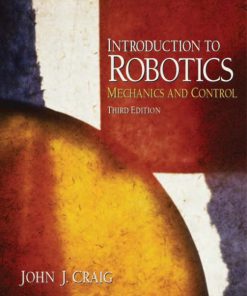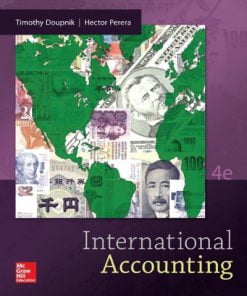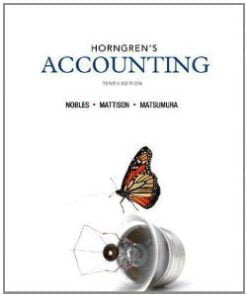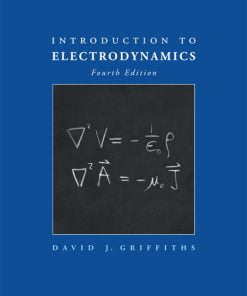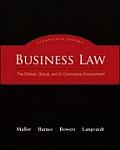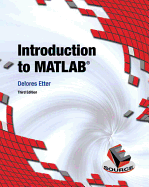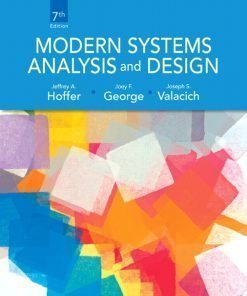Solution Manual for Statistical Inference, Second Edition, George Casella, Roger L. Berger
$35.00 Original price was: $35.00.$26.50Current price is: $26.50.
Solution Manual for Statistical Inference, Second Edition, George Casella, Roger L. Berger
Instant download Solution Manual for Statistical Inference, Second Edition, George Casella, Roger L. Berger pdf docx epub after payment.
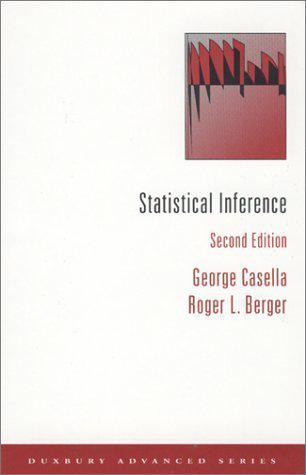
Product details:
- ISBN-10 : 0534243126
- ISBN-13 : 978-0534243128
- Author: Roger Berger; George Casella
This book builds theoretical statistics from the first principles of probability theory. Starting from the basics of probability, the authors develop the theory of statistical inference using techniques, definitions, and concepts that are statistical and are natural extensions and consequences of previous concepts. Intended for first-year graduate students, this book can be used for students majoring in statistics who have a solid mathematics background. It can also be used in a way that stresses the more practical uses of statistical theory, being more concerned with understanding basic statistical concepts and deriving reasonable statistical procedures for a variety of situations, and less concerned with formal optimality investigations.
Table of contents:
- 1. Probability Theory
- 1.1. Set Theory
- 1.2. Basics of Probability Theory
- 1.2.1. Axiomatic Foundations
- 1.2.2. The Calculus of Probabilities
- 1.2.3. Counting
- 1.2.4. Enumerating Outcomes
- 1.3. Conditional Probability and Independence
- 1.4. Random Variables
- 1.5. Distribution Functions
- 1.6. Density and Mass Functions
- 1.7. Exercises
- 1.8. Miscellanea
- 2. Transformations and Expectations
- 2.1. Distributions of Functions of a Random Variable
- 2.2. Expected Values
- 2.3. Moments and Moment Generating Functions
- 2.4. Differentiating Under an Integral Sign
- 2.5. Exercises
- 2.6. Miscellanea
- 3. Common Families of Distributions
- 3.1. Introduction
- 3.2. Discrete Distributions
- 3.3. Continuous Distributions
- 3.4. Exponential Families
- 3.5. Location and Scale Families
- 3.6. Inequalities and Identities
- 3.6.1. Probability Inequalities
- 3.6.2. Identities
- 3.7. Exercises
- 3.8. Miscellanea
- 4. Multiple Random Variables
- 4.1. Joint and Marginal Distributions
- 4.2. Conditional Distributions and Independence
- 4.3. Bivariate Transformations
- 4.4. Hierarchical Models and Mixture Distributions
- 4.5. Covariance and Correlation
- 4.6. Multivariate Distributions
- 4.7. Inequalities
- 4.7.1. Numerical Inequalities
- 4.7.2. Functional Inequalities
- 4.8. Exercises
- 4.9. Miscellanea
- 5. Properties of a Random Sample
- 5.1. Basic Concepts of Random Samples
- 5.2. Sums of Random Variables from a Random Sample
- 5.3. Sampling from the Normal Distribution
- 5.3.1. Properties of the Sample Mean and Variance
- 5.3.2. The Derived Distributions: Student’s t and Snedecor’s F
- 5.4. Order Statistics
- 5.5. Convergence Concepts
- 5.5.1. Convergence in Probability
- 5.5.2. Almost Sure Convergence
- 5.5.3. Convergence in Distribution
- 5.5.4. The Delta Method
- 5.6. Generating a Random Sample
- 5.6.1. Direct Methods
- 5.6.2. Indirect Methods
- 5.6.3. The Accept/Reject Algorithm
- 5.7. Exercises
- 5.8. Miscellanea
- 6. Principles of Data Reduction
- 6.1. Introduction
- 6.2. The Sufficiency Principle
- 6.2.1. Sufficient Statistics
- 6.2.2. Minimal Sufficient Statistics
- 6.2.3. Ancillary Statistics
- 6.2.4. Sufficient, Ancillary, and Complete Statistics
- 6.3. The Likelihood Principle
- 6.3.1. The Likelihood Function
- 6.3.2. The Formal Likelihood Principle
- 6.4. The Equivariance Principle
- 6.5. Exercises
- 6.6. Miscellanea
- 7. Point Estimation
- 7.1. Introduction
- 7.2. Methods of Finding Estimators
- 7.2.1. Method of Moments
- 7.2.2. Maximum Likelihood Estimators
- 7.2.3. Bayes Estimators
- 7.2.4. The EM Algorithm
- 7.3. Methods of Evaluating Estimators
- 7.3.1. Mean Squared Error
- 7.3.2. Best Unbiased Estimators
- 7.3.3. Sufficiency and Unbiasedness
- 7.3.4. Loss Function Optimality
- 7.4. Exercises
- 7.5. Miscellanea
- 8. Hypothesis Testing
- 8.1. Introduction
- 8.2. Methods of Finding Tests
- 8.2.1. Likelihood Ratio Tests
- 8.2.2. Bayesian Tests
- 8.2.3. Union-Intersection and Intersection-Union Tests
- 8.3. Methods of Evaluating Tests
- 8.3.1. Error Probabilities and the Power Function
- 8.3.2. Most Powerful Tests
- 8.3.3. Sizes of Union-Intersection and Intersection-Union Tests
- 8.3.4. p-Values
- 8.3.5. Loss Function Optimality
- 8.4. Exercises
- 8.5. Miscellanea
- 9. Interval Estimation
- 9.1. Introduction
- 9.2. Methods of Finding Interval Estimators
- 9.2.1. Inverting a Test Statistic
- 9.2.2. Pivotal Quantities
- 9.2.3. Pivoting the CDF
- 9.2.4. Bayesian Intervals
- 9.3. Methods of Evaluating Interval Estimators
- 9.3.1. Size and Coverage Probability
- 9.3.2. Test-Related Optimality
- 9.3.3. Bayesian Optimality
- 9.3.4. Loss Function Optimality
- 9.4. Exercises
- 9.5. Miscellanea
- 10. Asymptotic Evaluations
- 10.1. Point Estimation
- 10.1.1. Consistency
- 10.1.2. Efficiency
- 10.1.3. Calculations and Comparisons
- 10.1.4. Bootstrap Standard Errors
- 10.2. Robustness
- 10.2.1. The Mean and the Median
- 10.2.2. M-Estimators
- 10.3. Hypothesis Testing
- 10.3.1. Asymptotic Distribution of LRTs
- 10.3.2. Other Large-Sample Tests
- 10.4. Interval Estimation
- 10.4.1. Approximate Maximum Likelihood Intervals
- 10.4.2. Other Large-Sample Intervals
- 10.5. Exercises
- 10.6. Miscellanea
People also search:
statistical inference for engineers and data scientists
what are the two types of statistical inference
what is statistical inference and why is it important
statistical inference on representational geometries
statistical inference example problems
Related products
Solution Manual
Solution Manual for Introduction to Robotics Mechanics and Control 3rd Edition by Craig
Solution Manual
Management Information Systems Managing the Digital Firm Laudon 14th Edition Solutions Manual
Solution Manual
International Accounting Doupnik 4th Edition Solutions Manual
Solution Manual
Solution Manual for Introduction to Electrodynamics, 4/E 4th
Solution Manual
Solution Manual




